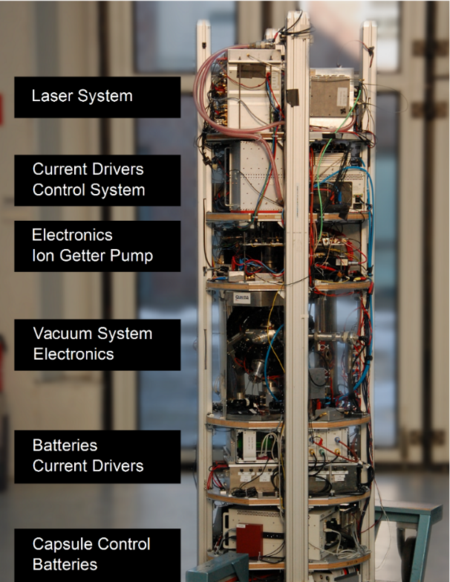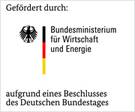QUANTUS-1
QUANTUS-1 is the first BEC apparatus operated in the drop tower. It combines laser cooling of Rb87-atoms with subsequent evaporative cooling in a magnetic chip trap to generate BECs of more than 10000 atoms. It has been used for several proof of principle experiments, among them the first BEC generation on a microgravity platform and the first BEC matterwave interferometry in free fall.
Currently, it serves as a testbed for advanced atom optical tools and concepts for chip-based miniaturized atom interferometry. One goal is to accommodate large momentum transfer beam splitters within the boundaries set by a compact atom chip device. This could be a key technology to enable compact and portable quantum sensors with improved precision.
Work on QUANTUS-1 is carried out within the QUANTUS-V Fallturm project. This is a collaborative project led by Leibniz University Hannover with 6 partnering institutions. Besides ZARM and LUH these are HU Berlin, JGU Mainz, TU Darmstadt and University of Ulm.

Related publications
S. Abend et. al. Atom-Chip Fountain Gravimeter, Phys. Rev. Lett. 117, 203003 (2016)
H. Müntinga et al. Interferometry with Bose Einstein Condensates in Microgravity, Phys. Rev. Lett. 110, 093602 (2013)
T. van Zoest et al. Bose-Einstein Condensation in Microgravity, Science 328 (5985), 1540-1543 (2010)
Contact
Dr. M. Gebbe, E. Hanimeli
Funding
The QUANTUS-V-Fallturm project is supported the German Space Agency (DLR) with funds provided by the Federal Ministry of Economic Affairs and Energy (BMWi) due to an enactment of the German Bundestag under Grant No. 50WM1955.




 "
"